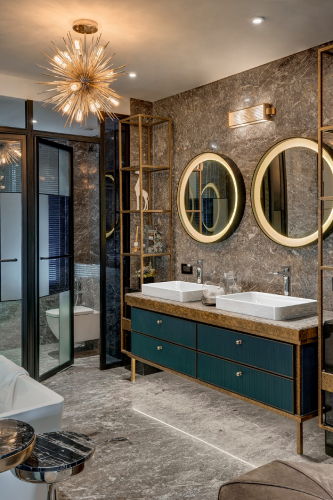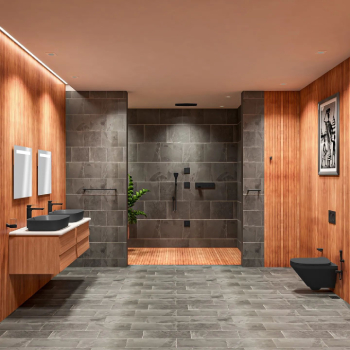Finding the Ideal Kitchen Sink Dimensions for Your Space

Choosing the right kitchen sink size shapes workflow, hygiene and the overall look of the space. A sink that matches cabinet width, benchtop depth and daily cooking patterns supports calm, efficient tasks from prep to clean-up. With the right bowl size, depth and configuration, the kitchen gains a reliable work hub that suits everything from quick breakfasts to generous weekend meals. The following guide sets out simple, practical steps for sizing a sink that fits the space and the way it is used, with helpful cues on compatible fittings from Kohler Africa.
Start with the Base Cabinet
Sink width begins with the base unit beneath the benchtop. Measure the internal span of that cabinet and select a sink that stays comfortably within it so that mounting clips, insulation and plumbing find room to sit. A 600 mm cabinet supports many standard single bowls. Wider 800 to 900 mm cabinets unlock the possibility of double bowls or an expansive bowl with a petite helper bowl. In galley kitchens and small flats, a trim 450 to 500 mm single bowl cabinet maintains storage and circulation.
Match Benchtop Depth and Cut-Out
Benchtops in many homes sit around 600 mm deep. The sink must allow front clearance for the work edge and back clearance for taps and the splashback. A model with a front-to-back size between 450 and 520 mm tends to sit well in such layouts. Corner installations may call for special geometries that place the bowl toward the user while keeping the drainer wings aligned with the counter. Always align the cut-out with cabinet rails and leave enough surface for sturdy support.

Choose the Right Bowl Configuration
Single bowl sinks deliver generous uninterrupted space for pots and baking trays. A double bowl splits tasks, letting rinsing run alongside soaking or vegetable prep. A one-and-a-half layout offers a main bowl with a compact secondary section for quick rinses or drying cutlery. For families that batch-cook or entertain often, a double bowl around 800 to 900 mm wide offers strong versatility. For minimalist studios, a deep single bowl at 500 to 600 mm wide saves space while still handling wide cookware.

Consider Depth for Comfort and Capacity
Depth influences posture, splash control and volume. A 180 to 200 mm deep bowl easily accommodates tall pots and oven trays, keeping water where it belongs. Taller users often prefer deeper bowls. Shorter users may value a slightly shallower option to reduce reach. Pair depth with a high-arc kitchen sink faucet for room under the spout and smooth manoeuvring of cookware.
Plan the Workflow Zone
The sink anchors a busy triangle with the hob and fridge. Leave generous landing zones on both sides for chopping boards, colanders and drying racks. In small kitchens, an integrated drainer or roll-up rack extends surface area only when required. Accessories such as fitted strainers, sliding cutting boards and multi-level grids increase capacity without demanding a wider footprint.
Top-Mount, Under-Mount or Flush-Mount
Top-mount sinks place the rim above the benchtop and suit most laminate surfaces. Under-mount sinks sit below stone or solid surfaces and make sweeping crumbs into the bowl simple. Flush-mount versions bring a sleek, near-seamless line where the rim meets the counter. Installation style affects usable width and cleaning style, so match it to the surface material and the preferred maintenance routine.

Material Matters
Stainless steel is still a top choice for durability and simplicity of maintenance. Choose thicker gauge steel for a quiet, solid operation. Fireclay and composite styles provide unique colours and textures, bringing design presence to the kitchen. For homes that value a sophisticated look, high-end finishes work well with a brushed nickel kitchen faucet or other brass faucets to produce a harmonious look which extends to handles and lighting.

Faucet Pairing and Compatibility
Sink size and shape influence faucet selection. A tall spout clears high-sided pans and trays. A pull-out or pull-down spray head boosts reach, making a compact sink behave like a larger station. A kitchen sink faucet with swivel action supports double-bowl layouts by moving water between sides. Touchless faucets bring hygienic convenience during messy prep. For a classic statement, a brass kitchen faucet adds warmth and visual weight. Premium faucets from Kohler Africa align with a wide spread of sink sizes and configurations and include options that coordinate with bathroom faucets and shower faucets for a whole-home design language.
Allowance for Plumbing and Accessories
Deep bowls and waste disposers occupy cabinet volume. Check space for traps, water filters, pull-out bins and cleaning caddies. In slim cabinets, a centre or rear-set waste and compact trap protect storage. For double bowls, consider a kit that unifies plumbing lines to maintain clearance for drawers or shelves.

Household Size and Cooking Style
A pair of people who cook rapid weekday dinners can do well with a 500 to 600 mm single bowl. A big family with regular batch cooking tends to appreciate an 800 to 900 mm double bowl, particularly when paired with a high-arc spout and pull-out spray. Bakers tend to appreciate a bowl that can engulf full-size trays. Urban flats gain from vertical capacity, so a deeper single bowl paired with a powerful spray yields strong cleaning in a small footprint.
Acoustics and Insulation
Quality sinks include sound-damping pads and insulating undercoats. These reduce clatter during dish drops and soften water noise, helpful in open-plan areas where conversations and media often share the space. Heavier construction also resists vibration, lending a premium feel during daily use.

Cleaning and Care
Rounded internal corners accelerate wipe-downs. Satin stainless finishes hide swirls from regular cleaning. Look at grids that lift pans off the countertop, shielding the surface and enhancing drainage. A multi-spray head faucet accelerates rinsing of salads, grains and cookware, which in turn decreases clean-up and maintains the finish on the sink.
A Note on Style Cohesion
Hardware harmony unifies the kitchen. Match the sink finish with the kitchen sink faucet, cabinet pulls and nearby fixtures. A family of premium faucets from Kohler Africa allows one visual language in the kitchen, then extends that language to bathroom faucets and shower faucets for consistent style across the home.
Quick Sizing Checklist
Confirm base cabinet width, then select a sink that fits comfortably inside it. Align front-to-back size with benchtop depth and splashback clearance. Choose a configuration that reflects daily tasks. Pair bowl depth with a high-arc spout for clearance. Reserve cabinet volume for plumbing, filters and organisers. Add sound damping, fitted accessories and a faucet feature set that expands capability. With these steps, the kitchen gains a sink that looks refined, works hard and supports a calm routine day after day.
Kohler Africa provides sink and faucet solutions that are designed for small studios, kitchen spaces for families and chef-inspired designs. From touchless faucets to make hygiene easy to brass faucets to give timeless schemes an elevated look, coordinated selections result in a kitchen that is purposeful, sophisticated and prepared for any meal.
FAQ
How to choose the perfect kitchen sink size?
Start with the cabinet width and let that guide the sink size. A 600 mm cabinet fits a single bowl, while wider ones can take double or one-and-a-half bowls. Match the sink depth to comfort and usage, usually around 180 to 200 mm for larger pots. Ensure enough space at the front and back for fittings and splashback. The right size balances cabinet fit, bowl depth and daily use, keeping every task smooth and practical.






